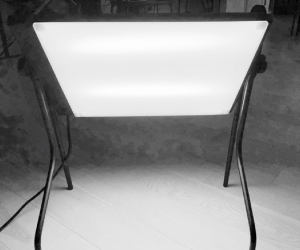WELCOME TO CET!
We are an independent, non-profit professional organization dedicated to education &
research on new environmental therapies.
Here you can learn all about SAD and the health benefits of enhanced light, plus
a chance to win our featured light therapy lamp!
SEASONAL AFFECTIVE DISORDER (SAD) IS REAL...
BUT YOU CAN FIGHT IT!
What is SAD?
SAD is a collection of mood, energy and physical symptoms that appear in fall and winter , particularly in the northern half of the United States, but throughout the country and around the world. SAD sufferers can count on relief in the spring and summer, but the other half of the year can be very challenging.
SAD is a collection of mood, energy and physical
symptoms that appear in fall and winter , particularly
in the northern half of the United States, but
throughout the country and around the world. SAD
sufferers can count on relief in the spring and
summer, but the other half of the year can be very challenging.
What causes SAD?
The biggest culprit is later sunrise, along whith shorter hours of sunlight from september throught March. This seasonal change affects our inner clock — known as our carcadian rhythm — shifting in later in the day. Genetic factors can also play a role and can make you more vulnerable to depression.
The biggest culprit is later sunrise, along whith shorter
hours of sunlight from september throught March.
This seasonal change affects our inner clock
— known
as our carcadian rhythm — shifting in later in the day.
Genetic factors can also play a role and can make
you more vulnerable to depression.
What are the
symptoms of SAD
In addition to depressed mood, the range of symptoms can include increased appetite, weight gain, intense fatigue, difficulty waking up in time for school or work, and/or withdrawal from social contact. Appetite and sleep changes often occur weeks before mood becomes depressed, but the pattern can vary from person to person.
In addition to depressed mood, the range of
symptoms can include increased appetite, weight
gain, intense fatigue, difficulty waking up in time for
school or work, and/or withdrawal from social
contact. Appetite and sleep changes often occur
weeks before mood becomes depressed, but the
pattern can vary from person to person.
Adding morning light with use of a bright light box is the quickest, best way to avoid falling into winter depression. Other natural methods have also been successful, including gradual simulation of springtime dawns in the bedroom toward the end of sleep, and improving indoor air quality by charging the oxygen with negative ions.
Adding morning light with use of a bright light box is the quickest, best way to avoid falling into winter depression. Other natural methods have also been successful, including gradual simulation of springtime dawns in the bedroom toward the end of sleep, and improving indoor air quality by charging the oxygen with negative ions.
Meet our experts, and a patient whose life turned around with light therapy, in a 6-minute video on seasonal and nonseasonal depression.
Complete the form below and we'll place you in a random drawing for:
- a Northern Light Technologies BOXelite OS Light Therapy Lamp, PLUS
- a one-on-one Zoom chat with CET's President and editor-in-chief, New York Times-featured, Columbia University Professor Michael Terman, Ph.D.
CET focuses on much more than SAD. To learn more, visit us . . .
Contact us at info@cet.org
Founded in 1994, CET is an independent, non-profit professional organization dedicated to education and research on new environmental therapies.
We offer a variety of services, including background information, self-assessment questionnaires, and environmental therapy products.
Help us help more people with a tax-deductible donation!
Give Now


